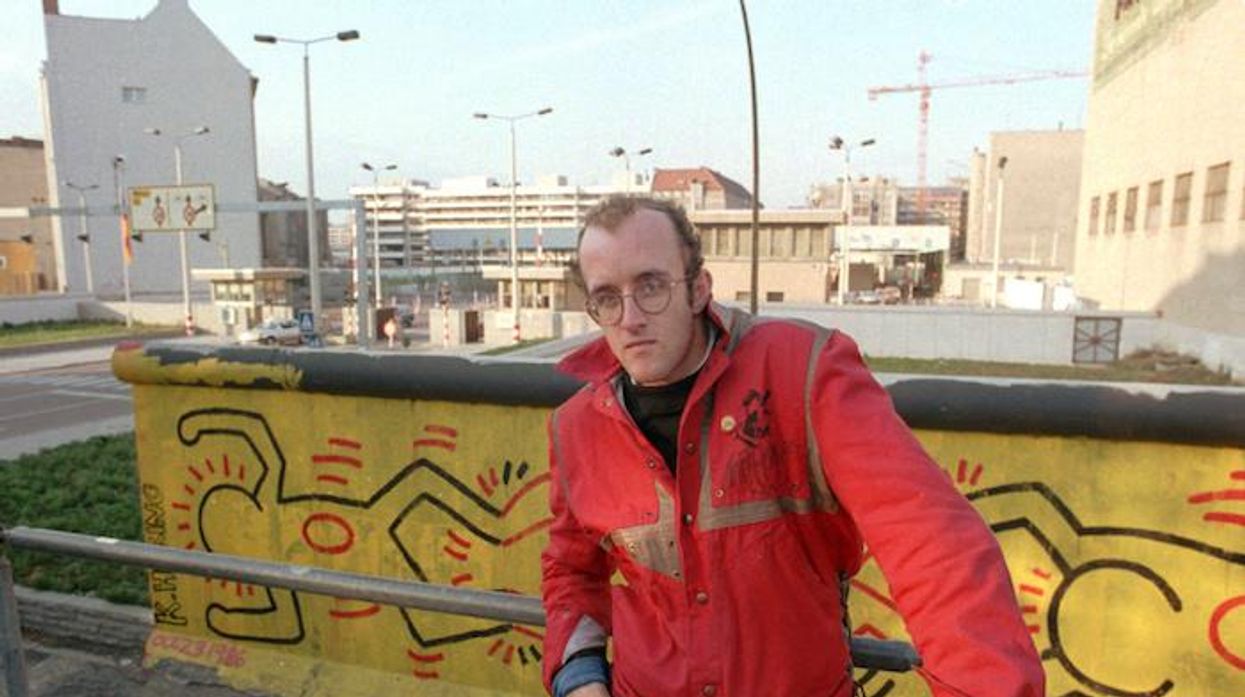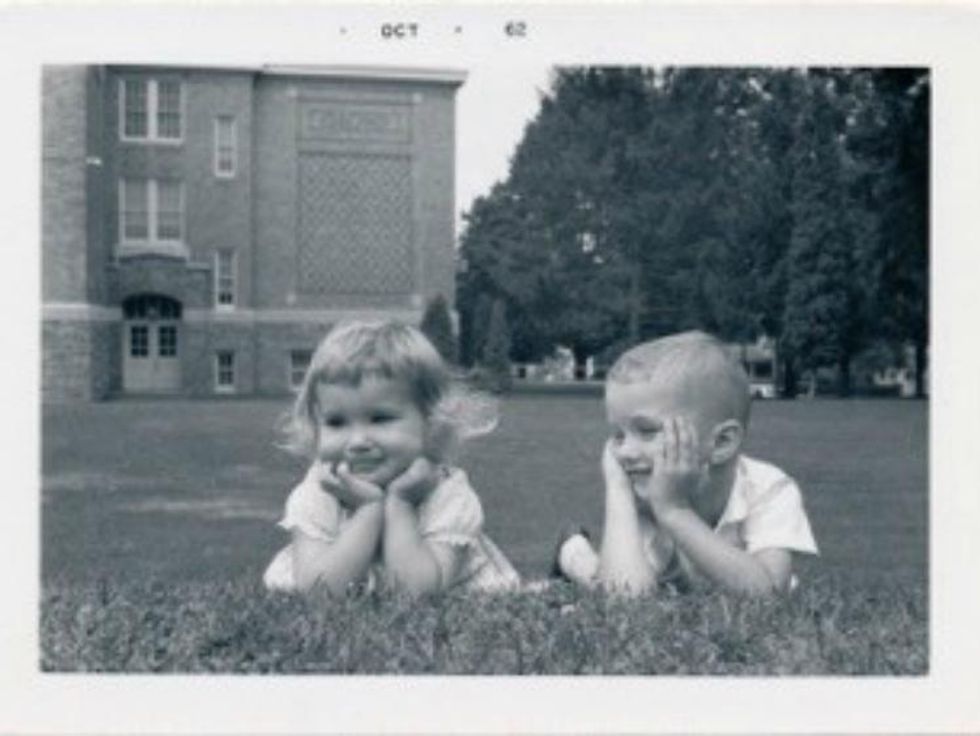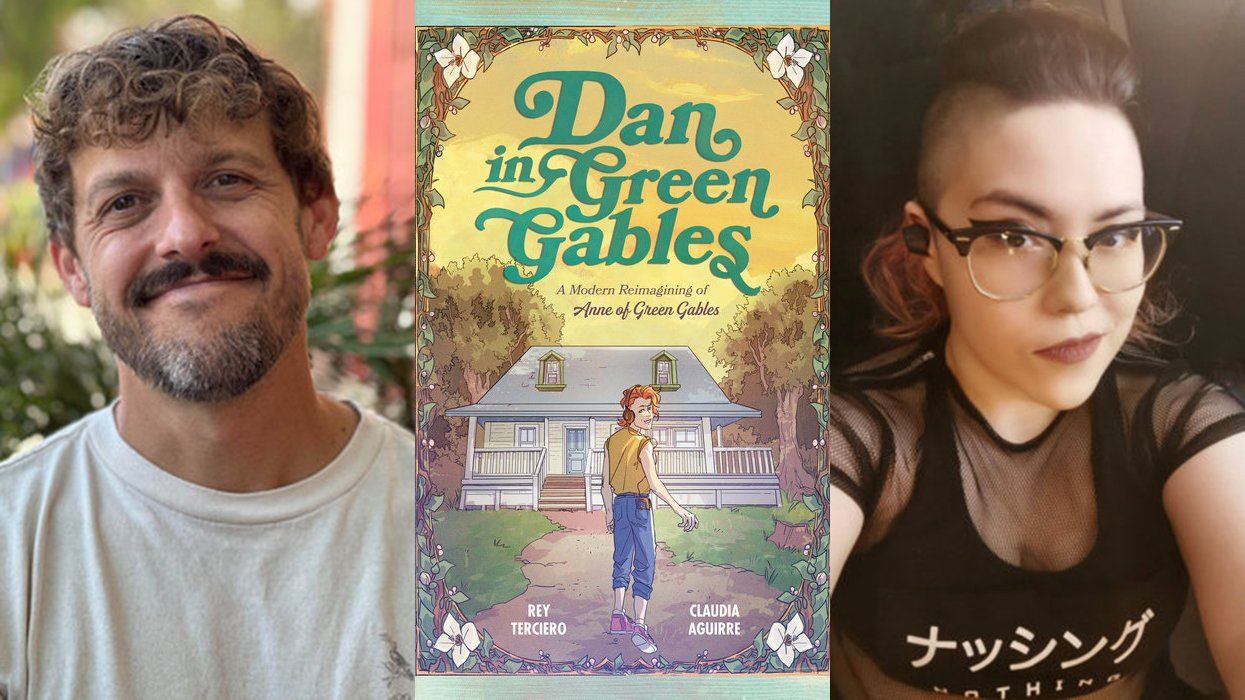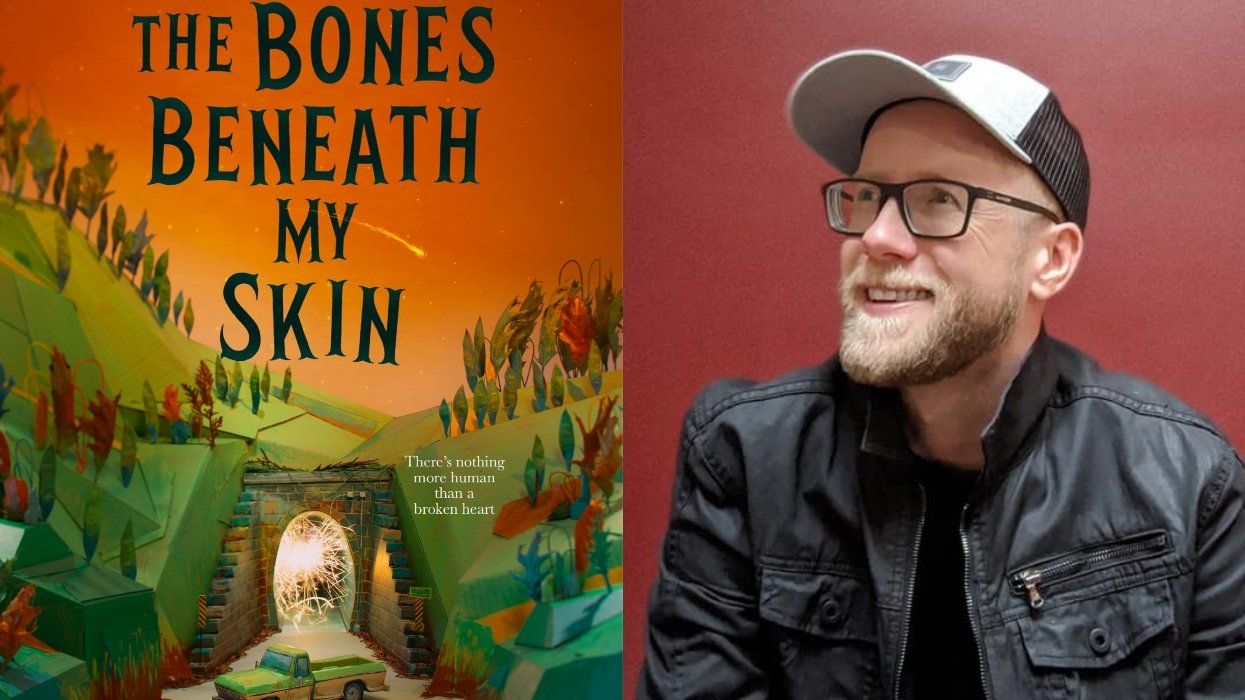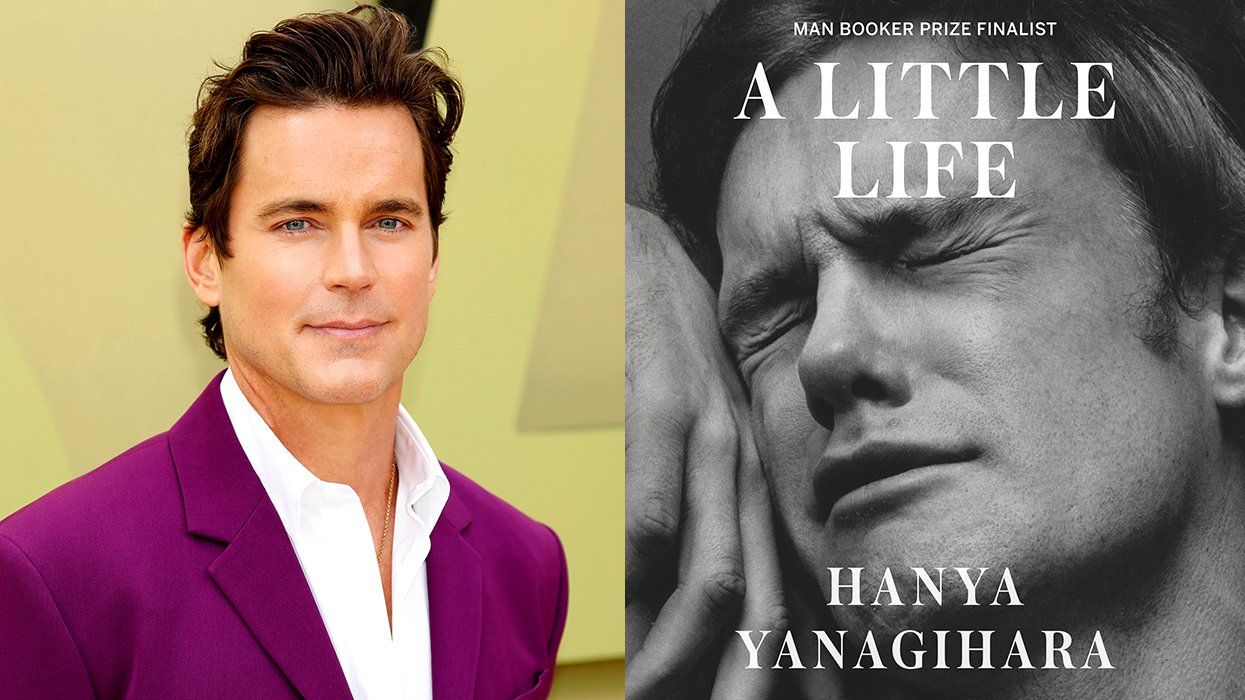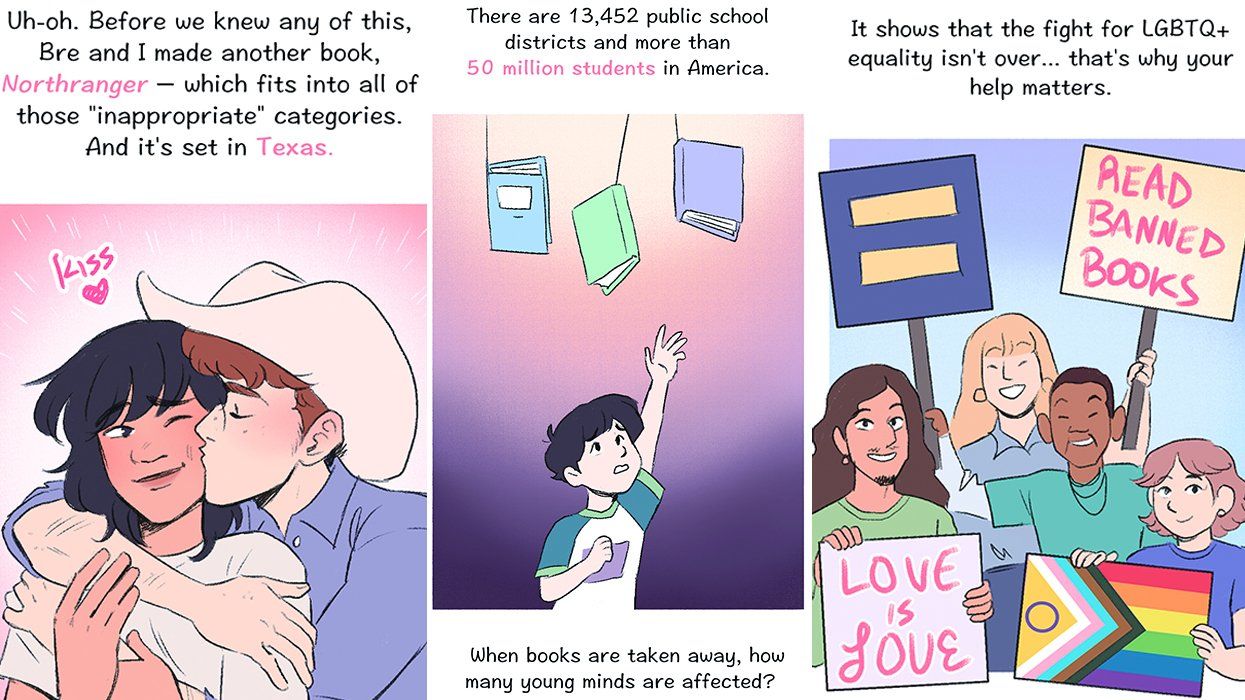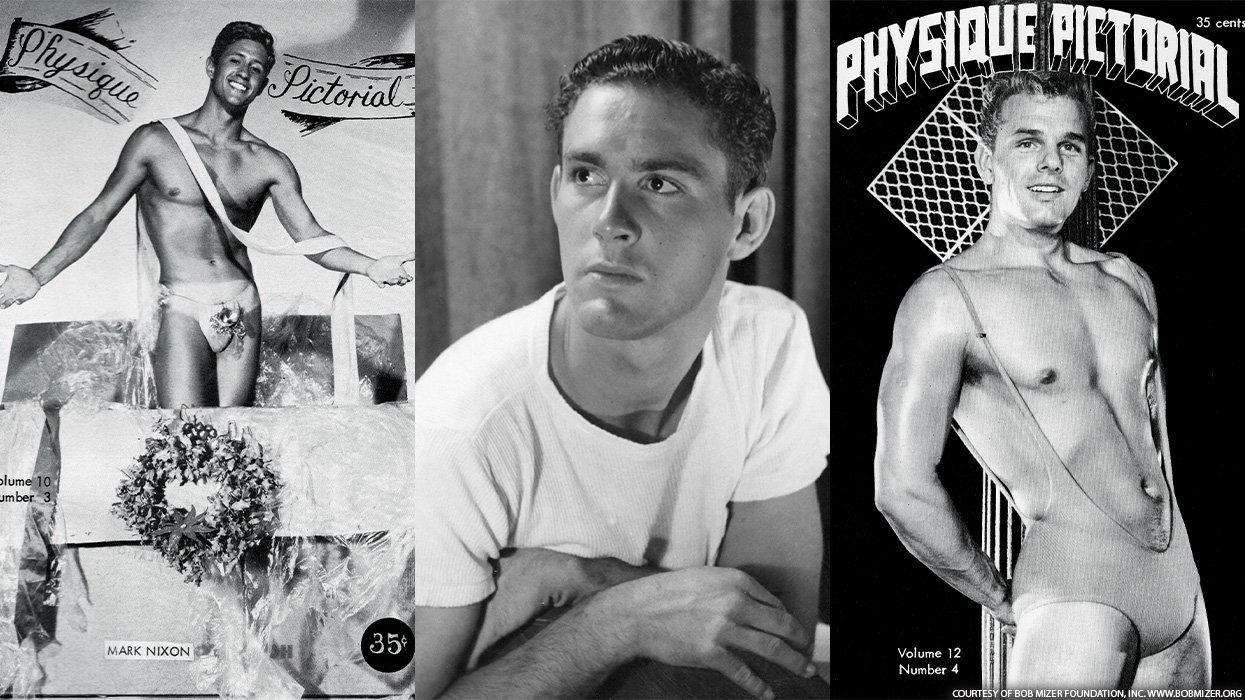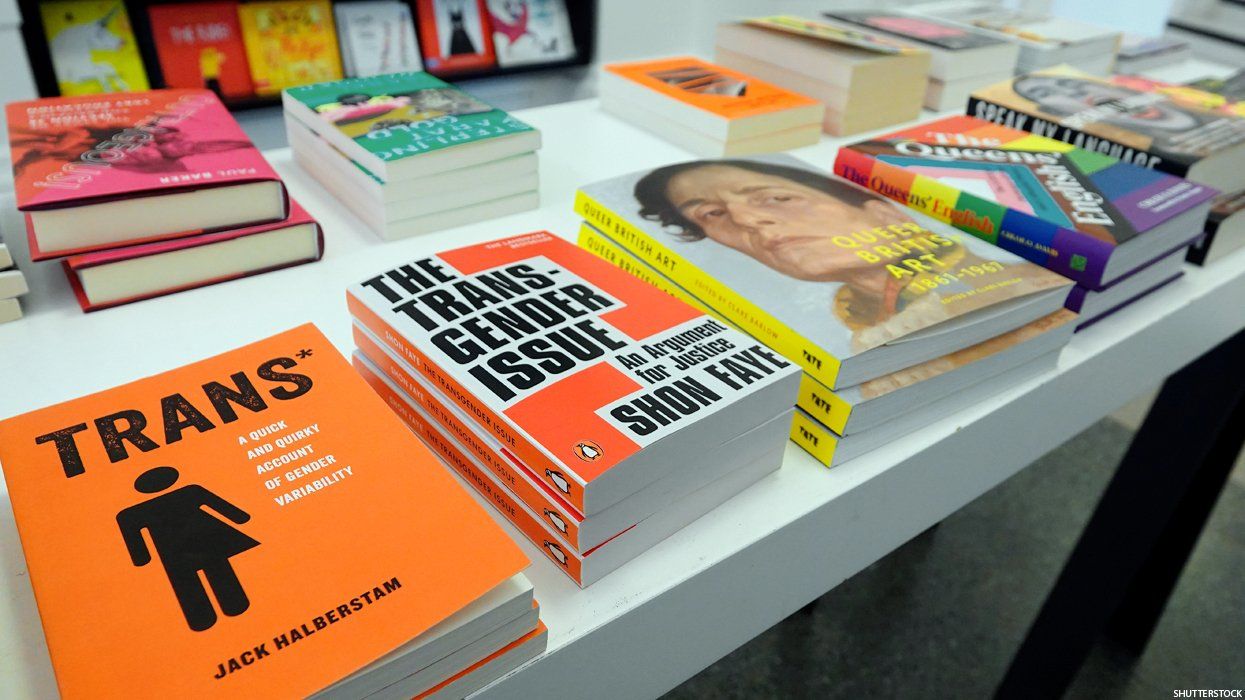In the age of self-made celebrities whose fame and fortune can be accredited to their Instagram followings, few artists stand the test of time like Keith Haring. A friend and collaborator of Andy Warhol, his work was part of a movement he might never have imagined, paving the way and inspiring many more to come. From public murals to t-shirts, his iconic vision lives on today.
27 years after he died too young, a crowd of influencers, art enthusiasts, and long-time fans flocked to the Whitney Museum of American Art in Lower Manhattan. It was the launch of Keith Haring: The Boy Who Kept Drawing, a children's book about the artist's life, written by none other than the artist's sister, Kay Haring.
OUT caught up with Kay before the book signing to discuss her brother's lasting legacy and why she decided to write a children's book about him.
OUT: Keith's art definitely had a lot of mature themes. What made you want to tell his story for kids?
Kay Haring: That's a pretty deep question. (Laughs) I had written versions of this over the years, and it just came out that way. I think because I'm really interested in making a positive influence on kids in the same way that Keith was. If you read the book, there are some lessons like persistence, work hard and follow your dreams. If you continue to work at it, dreams really can come true. For Keith, the dream was really about reaching a lot of people. So sure, he had a lot to say in political arenas and about AIDS and about being gay. And it's not that I'm staying away from those topics, because my personal desire is to write stories like that for kids because I think kids can handle a whole lot more than we as adults give them. But I just took a piece of what I wanted to talk about for Keith and emphasized that. I think you can tell a serious story in simple words, and I guess maybe that's one of the reasons it came out as a children's story. I really just wanted to start when he was a young boy and how he really just kept drawing and he continued to follow what he wanted to do, and that led him to where he wanted to end up. And it seemed to be a really good way to reach children.
Did you tell these stories to your own kids when they were growing up?
Yes, and not that I told the stories so much but my daughters were 4 and 5 when Keith died, and so they had already been around him a little bit. They were very young but as they will even say, they grew up learning about their uncle actually from other people as much as me. It's an interesting perspective when you learn about a family member that was so close to you but because he had such an impact and so much information came to them from the outside world. That made more of an impression to them that they learned about their uncle from other people, like talking about him in school in so forth. What ended up in the book which are sort of the hallmarks of him being generous and some of the public murals that he did, those have just been around and part of the family stories that we've told for a long time.
Kay & Keith (Photo Courtesy of Kay Haring)
What was your relationship like with him when he was coming of age?
Well growing up, he was your typical irritating older brother. He was the older brother, and then there was three of us sisters, and I'm the oldest of the sisters. But you know, he's like any irritating older brother. That's the first thing I tell people.
We just remember him drawing all the time. He was almost withdrawn in a way because he just stayed in his room, and he was just drawing. That was just his thing. But he was so enveloped in it, and that was like his whole being. That's what we remember, growing up with him. It's interesting to me, looking back now that our parents sort of allowed that to happen or maybe they were just very encouraging in a nonjudgmental way.
What's it like knowing that his legacy lives on so long after his death?
I've always known for the last 27 years that his legacy lives on. All the time, I have friends and acquaintances telling me they've traveled all over the world and they took a picture that they're like, "Look what I found. Did Keith draw this?" It was on some planter at Westchester College in Pennsylvania, and it looked brand new so he probably didn't paint that. But it's someone doing it in his style, so there's always been this constant reminder of him being there. It's phenomenal. But I will say that in the past few weeks, I've started to reach out on Facebook and social media. People have sent me these overwhelmingly wonderful stories about how he influenced them. And it's all sort of bubbling up again, how people didn't just like his work, they loved him. It's been a reminder about how much they really loved him as a person. And that's really why I wanted to do the book. I think it's fitting right into that.
Is there one particular piece of his that sticks out to you as a favorite? Something you like to visit when you can?
There's a sculpture that I think his foundation and Tony Shafrazi helped donate in our hometown, in Kutztown, Pennsylvania. So when I'm there, that's a great one to go see, especially because not many people know about it. There's this huge beautiful sculpture, and it's sitting in the park of Kutztown, Pennsylvania.
Then there's one in Paris, the one at the Necker Hospital, and that's actually featured in the book. So the last time I was in Paris, I went to see that. And fortunately, that was when they were raising money to restore it because there had been a plan to tear down that portion of the building. But someone decided to restore it just because Keith's mural was on the outside.
How did he impact you personally?
There's so many ways but I can think of one specifically. It was right when he knew he had AIDS, and it was a terrible time. It was horrible. It was an awful time. He knew he was gonna die, and he had this amazing view like, "I'm gonna work as hard as I can and as long as I can. It's inevitable, I have to accept this. I just have to do all the good I can do for other people." He was incredibly selfless. You have your big brother who's talking about these things in public. It really is hard to understand now, how stigmatized gay people were in the '80s. It was phenomenal that he even stood up and said, "I have AIDS." Because that meant he was gay. He did it in such a humble way like, "This is what I'm gonna do because it's the truth, and I'm just gonna say it." And he did.
Written by Kay Haring and illustrated by Robert Neubecker, Keith Haring: The Boy Who Just Kept Drawing is now available at Penguin Random House.


